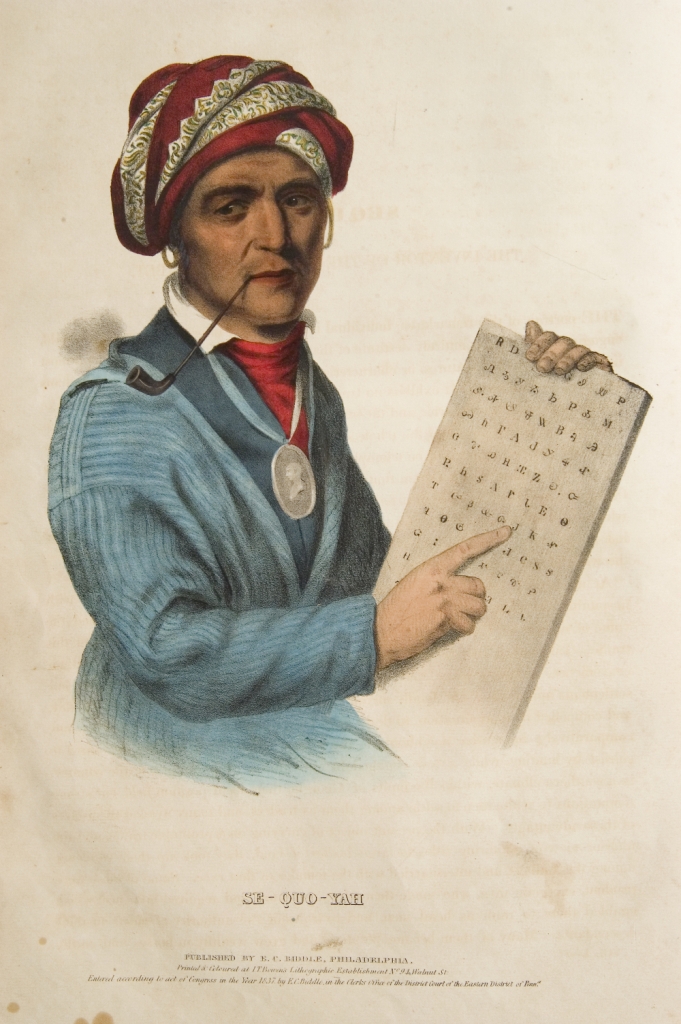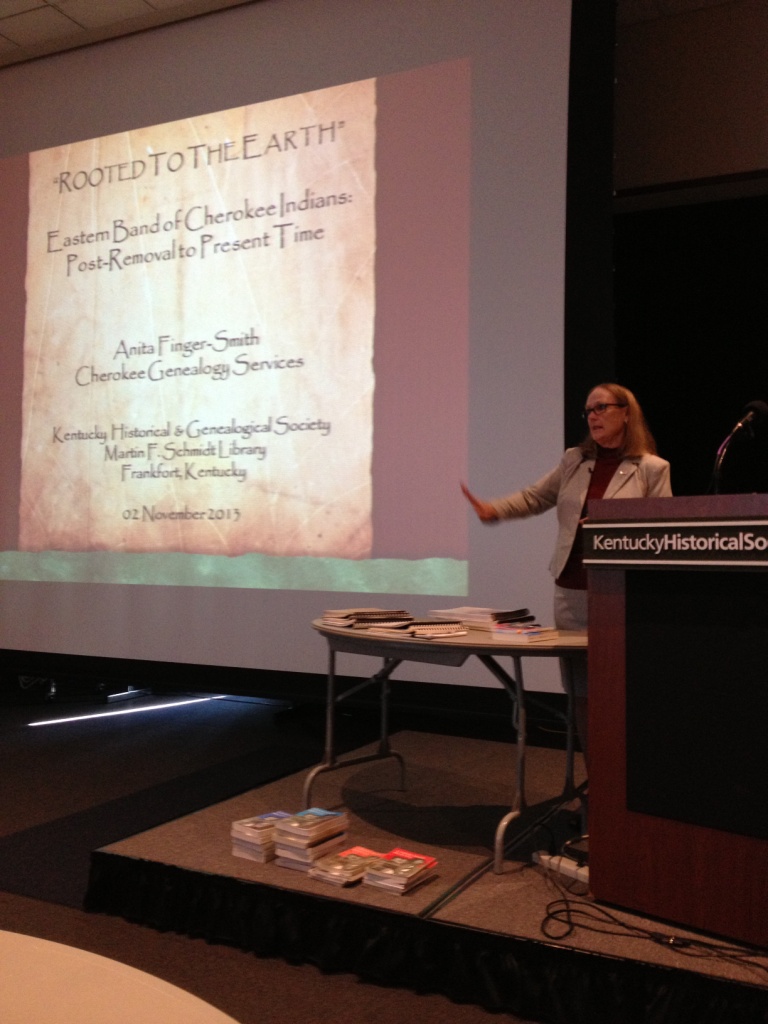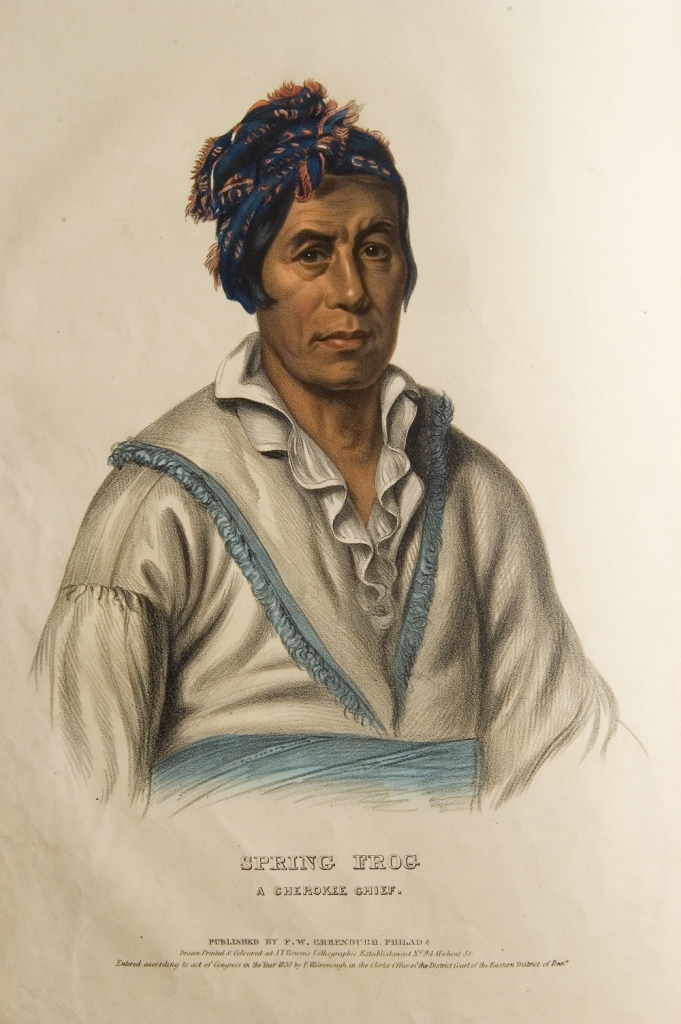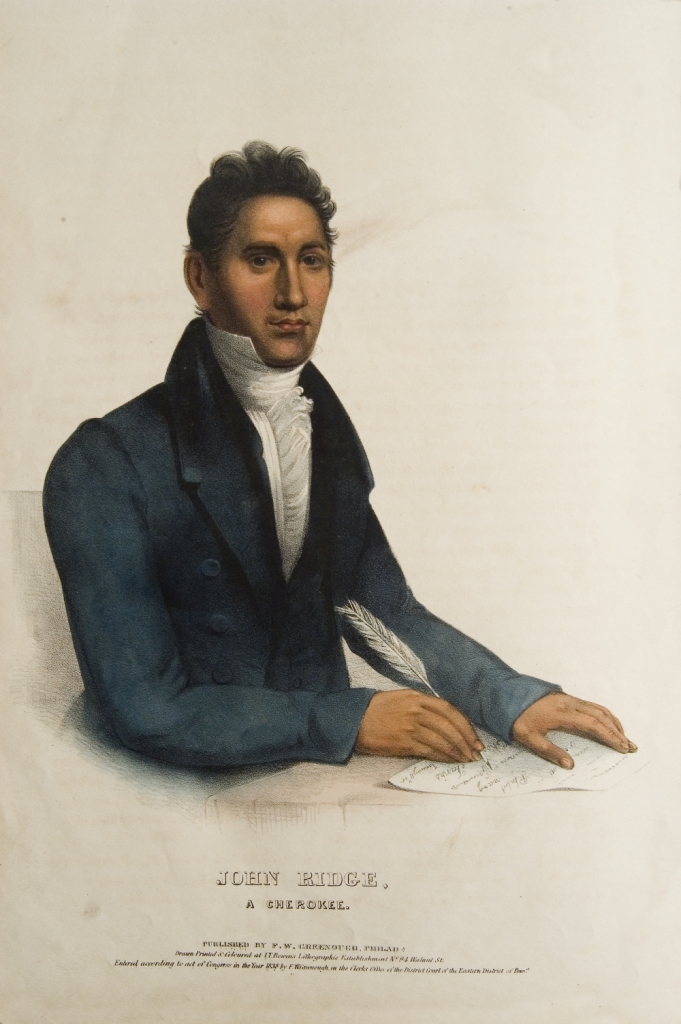 When Native American Heritage Month rolls around, Kentuckians with Native American roots usually take notice. Regionally, Kentucky not only played a large part in migration patterns for several eastern tribes but it also sits very close to a major tribal area: The Eastern Band of the Cherokee. Many Kentuckians have heard oral traditions passed down that claim shared bloodlines to one or more tribes in the area. So, how should we approach this type of family tradition? We asked professional genealogist Anita Finger-Smith to help with this situation. As a researcher affiliated with the Eastern Cherokee tribe, she is accomplished at sorting out the fact from the fiction.
When Native American Heritage Month rolls around, Kentuckians with Native American roots usually take notice. Regionally, Kentucky not only played a large part in migration patterns for several eastern tribes but it also sits very close to a major tribal area: The Eastern Band of the Cherokee. Many Kentuckians have heard oral traditions passed down that claim shared bloodlines to one or more tribes in the area. So, how should we approach this type of family tradition? We asked professional genealogist Anita Finger-Smith to help with this situation. As a researcher affiliated with the Eastern Cherokee tribe, she is accomplished at sorting out the fact from the fiction.
 Earlier this month, Ms. Finger-Smith was our guest speaker at the Second Saturday Family History Workshop, hosted by KHS and the Kentucky Genealogical Society. During her presentations, Rooted to the Earth, she addressed some of the common challenges often encountered by those with oral tradition lineages. Much of her current work centers on following a paper trail. Despite a perceived lack of records, she assured the audience that there are many sources of records available when researching Native American lines. In particular, the various Rolls taken over the decades by the U.S. Government stretch back many years and provide a trail of ancestry. For those interested in Enrollment Eligibility with the Eastern Cherokee, Ms. Finger-Smith reminded attendees that the final proof for this connection lies in the 1924 Baker Roll. If you can prove descent from an ancestor listed in this particular Roll, and can then calculate blood quantum, you may be eligible for tribal membership.
Earlier this month, Ms. Finger-Smith was our guest speaker at the Second Saturday Family History Workshop, hosted by KHS and the Kentucky Genealogical Society. During her presentations, Rooted to the Earth, she addressed some of the common challenges often encountered by those with oral tradition lineages. Much of her current work centers on following a paper trail. Despite a perceived lack of records, she assured the audience that there are many sources of records available when researching Native American lines. In particular, the various Rolls taken over the decades by the U.S. Government stretch back many years and provide a trail of ancestry. For those interested in Enrollment Eligibility with the Eastern Cherokee, Ms. Finger-Smith reminded attendees that the final proof for this connection lies in the 1924 Baker Roll. If you can prove descent from an ancestor listed in this particular Roll, and can then calculate blood quantum, you may be eligible for tribal membership.
 Another important issue brought up during the presentations was the possibility of connecting through DNA. Ms. Finger-Smith gave the official tribal stance on this issue: At this time, no DNA results are permitted to prove ancestry. She explained that DNA results are used for parentage in the case of newborns born within the tribe, but as for ancestry, DNA is not permitted as a method of lineage determination simply because DNA results are not advanced enough to accurately identify tribal ancestry. While it is possible to learn whether you have Native American roots through DNA, it cannot tell you which tribe your line comes from. She added that perhaps someday this might be possible, but for now, the Eastern Band of the Cherokee does not accept DNA results to prove eligibility. In other words, it still takes some good old fashioned genealogy research to connect you back to the 1924 Baker Roll.
Another important issue brought up during the presentations was the possibility of connecting through DNA. Ms. Finger-Smith gave the official tribal stance on this issue: At this time, no DNA results are permitted to prove ancestry. She explained that DNA results are used for parentage in the case of newborns born within the tribe, but as for ancestry, DNA is not permitted as a method of lineage determination simply because DNA results are not advanced enough to accurately identify tribal ancestry. While it is possible to learn whether you have Native American roots through DNA, it cannot tell you which tribe your line comes from. She added that perhaps someday this might be possible, but for now, the Eastern Band of the Cherokee does not accept DNA results to prove eligibility. In other words, it still takes some good old fashioned genealogy research to connect you back to the 1924 Baker Roll.
 For the rest of us who still have that family tradition, and we still want to dig further, Ms. Finger-Smith reminded us that historically our ancestors had a choice. They either stayed with the tribe or they lived outside of the tribal boundaries and attempted to assimilate into the surrounding population. Sometimes tribal connections were not just lost through marriage, but through migration. If a family moved too far away from tribal lands, they were no longer considered to be a part of the tribe. For ancestors in the 19th century, the designation “Indian” was not even an accepted term for racial identification on the U.S. Census until 1870 and beyond, which left our ancestors to choose a racial designation that was closest to their appearance. If they were able to declare “W” for “white”, they would have chosen this over the years as part of their assimilation attempts. Ms. Finger-Smith reminded attendees that bringing attention to their heritage was not a goal if they wished to live among the non-tribal populace. This explains many family stories and why the only thing we have left is the story with little or no documented proof.
For the rest of us who still have that family tradition, and we still want to dig further, Ms. Finger-Smith reminded us that historically our ancestors had a choice. They either stayed with the tribe or they lived outside of the tribal boundaries and attempted to assimilate into the surrounding population. Sometimes tribal connections were not just lost through marriage, but through migration. If a family moved too far away from tribal lands, they were no longer considered to be a part of the tribe. For ancestors in the 19th century, the designation “Indian” was not even an accepted term for racial identification on the U.S. Census until 1870 and beyond, which left our ancestors to choose a racial designation that was closest to their appearance. If they were able to declare “W” for “white”, they would have chosen this over the years as part of their assimilation attempts. Ms. Finger-Smith reminded attendees that bringing attention to their heritage was not a goal if they wished to live among the non-tribal populace. This explains many family stories and why the only thing we have left is the story with little or no documented proof.
 The November Second Saturday crowd was overwhelmed with the amount of detailed and authoritative information provided by Ms. Finger-Smith. She covered the history of the tribes around and within Kentucky, the general/early migration routs as well as those routs taken during the Trail of Tears. Attendees were also given a wonderful packet of information outlining the history of Rolls, and a list of records available when researching your Native American Roots. One little tid-bit of information shared was a link to the current newspaper of the Eastern Cherokee: Cherokee One Feather (http://theonefeather.com/) Not only can you keep up with tribal issues, but you can learn more about their history as a regular feature of the publication. The KHS Library would also like to thank Ms. Finger-Smith for her generous donation of the 1924 Baker Roll to our collection! We have several different Rolls in the library, but the final one used by the Eastern Cherokee was not among them. When visiting the library, you can now view the Baker Roll as well as a bound copy of Ms. Finger-Smith’s lecture material. For more information, please visit her website at: http://cherokeegenealogyservices.com/
The November Second Saturday crowd was overwhelmed with the amount of detailed and authoritative information provided by Ms. Finger-Smith. She covered the history of the tribes around and within Kentucky, the general/early migration routs as well as those routs taken during the Trail of Tears. Attendees were also given a wonderful packet of information outlining the history of Rolls, and a list of records available when researching your Native American Roots. One little tid-bit of information shared was a link to the current newspaper of the Eastern Cherokee: Cherokee One Feather (http://theonefeather.com/) Not only can you keep up with tribal issues, but you can learn more about their history as a regular feature of the publication. The KHS Library would also like to thank Ms. Finger-Smith for her generous donation of the 1924 Baker Roll to our collection! We have several different Rolls in the library, but the final one used by the Eastern Cherokee was not among them. When visiting the library, you can now view the Baker Roll as well as a bound copy of Ms. Finger-Smith’s lecture material. For more information, please visit her website at: http://cherokeegenealogyservices.com/
Engravings used in this post were taken from the book: History of the Indian tribes of North America, with biographical sketches and anecdotes of the principal chiefs. Embellished with one hundred and twenty portraits, from the Indian gallery in the Department of war, at Washington. Click here to visit the Library catalog entry and to view more images from various North American tribes.
that nil aspiration vary.
